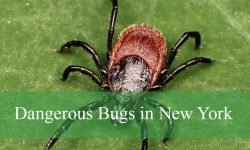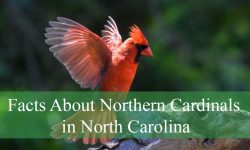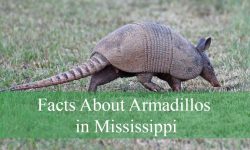Kansas is home to a variety of dove species, each bringing its own shape, color, and behavior to the state’s fields, small towns, and backyard feeders. Some are familiar residents found from one season to the next, while others appear only in certain regions or during warmer months. Their gentle calls and graceful flight make them a noticeable part of Kansas’s birdlife.
Although many people associate doves with open farmland, they adapt surprisingly well to cities, suburbs, and wooded edges. Different species show subtle but important differences in size, markings, and habits, which makes identification both interesting and rewarding. Learning these traits helps birdwatchers recognize them more easily in the field.
This guide highlights six types of doves found in Kansas and provides clear identification details, behavior notes, and an understanding of where each species is most likely to appear. Whether watching from a backyard feeder or exploring rural landscapes, these birds are easy to spot once you know what to look for.
Different Types of Doves Found in Kansas
Mourning Dove
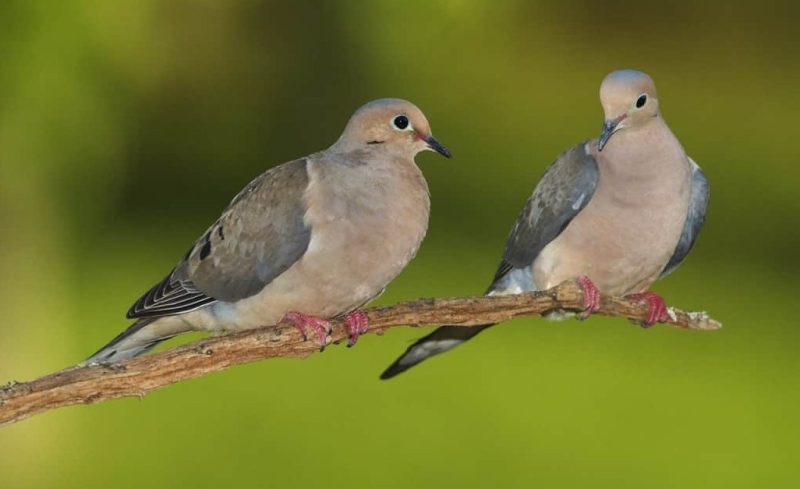
The Mourning Dove is one of the most recognizable doves in Kansas, known for its soft gray-brown plumage, black wing spots, and long, pointed tail. Its slender body and gentle expression make it easy to identify, especially when perched on wires or fence posts. The subtle iridescence on the neck occasionally shines in sunlight, adding to its delicate appearance.
Adults usually measure around 9 to 13 inches in length, making them medium-sized compared to other doves. Their wings are long and pointed, giving them a distinctive whistling sound during takeoff and landing. Despite their lightweight build, they are strong fliers capable of sudden bursts of speed.
Mourning Doves are commonly found in open fields, prairies, farmland, suburbs, and grasslands across Kansas. They prefer areas with scattered trees or shrubs where they can nest and roost. Their adaptability allows them to thrive in both rural and urban environments.
Their diet consists mainly of seeds, grains, and small fruits, which they forage on the ground in large flocks during certain seasons. Although not predators, they may consume small gravel or grit to aid digestion. Their calm behavior and gentle feeding habits make them a familiar sight around backyard feeders.
Eurasian Collared-Dove

The Eurasian Collared-Dove is a pale gray species with a sleek body and a distinctive black collar on the back of its neck, giving it its common name. Its squared-off tail and slightly larger size distinguish it from the Mourning Dove. The species has a clean, uniform appearance with soft shading across the body.
Adults generally measure about 12 to 14 inches long, making them larger and more robust than most native doves in Kansas. Their wings are broad, and their flight is typically direct and powerful. They also produce a characteristic three-part cooing call often heard around residential areas.
These doves are widespread across Kansas and are especially common near towns, farms, grain elevators, and suburban neighborhoods. They prefer open spaces with scattered buildings or trees and are often seen perched on rooftops, utility poles, or fences. Their rapid range expansion has made them a year-round resident.
Eurasian Collared-Doves feed primarily on seeds, grains, and agricultural crops. They frequently visit backyard feeders and can dominate food sources when present in large numbers. Their behavior is generally calm, though they may actively chase smaller birds to secure feeding spots.
White-winged Dove
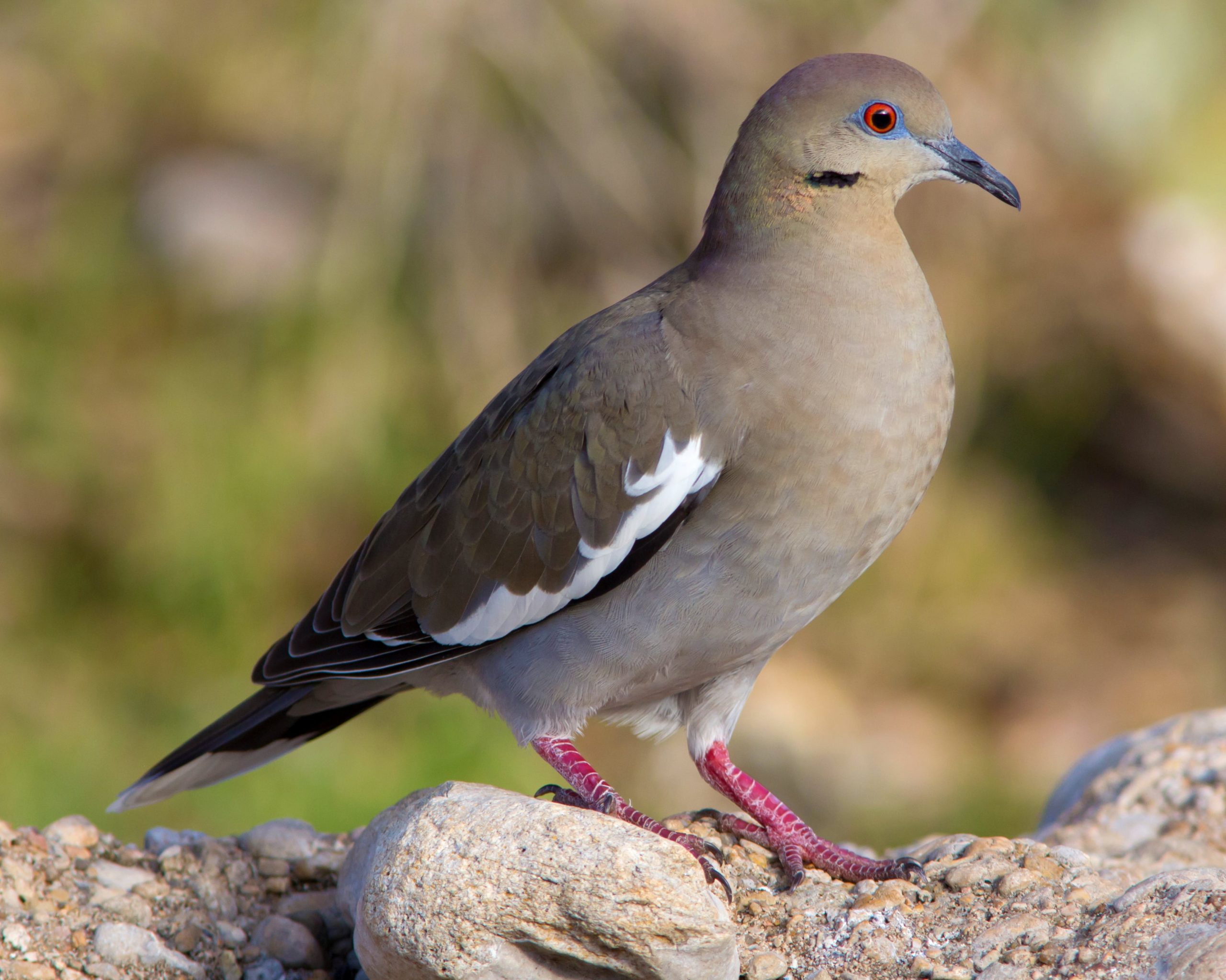
The White-winged Dove has a warm gray-brown body with a striking white patch along the edge of each wing, visible both at rest and in flight. Its blue eye ring and dark primary feathers add contrast to its appearance. This bold wing marking makes it easy to differentiate from other dove species in Kansas.
Adults range from 11 to 13 inches in length, with strong, broad wings adapted for long-distance travel. Their bodies are slightly more muscular compared to Mourning Doves, and their flight appears direct and confident. Their calls are deeper and more resonant than other Kansas doves.
Although historically a southwestern species, the White-winged Dove has expanded its range and is now seen in southern and central Kansas, especially during migration and warmer months. They frequent open woodlands, urban yards, fields, and areas with scattered trees or water sources.
Their diet consists of seeds, grains, berries, and occasionally nectar from flowering plants. They forage both on the ground and in trees, showing greater feeding flexibility than some other doves. Their behavior is generally calm, though they may form large groups during late summer when food is plentiful.
Rock Pigeon
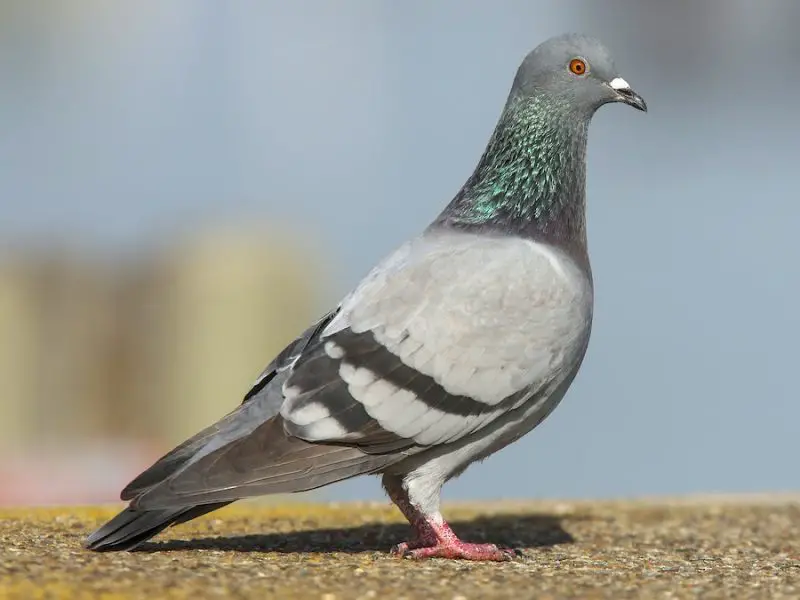
The Rock Pigeon displays wide color variation, though the most common form has a bluish-gray body, iridescent green and purple neck, and two dark wing bars. Its stout build and rounded tail make it easy to recognize in urban settings across Kansas. These birds often gather in flocks, creating a familiar cityscape presence.
Adults typically measure between 11 and 14 inches and have broad wings that enable agile flying even in crowded areas. Their strong flight muscles allow them to maneuver around buildings, bridges, and other structures with ease. Their cooing calls are soft but often heard in large colonies.
Rock Pigeons are predominantly found in Kansas cities, towns, farms, and industrial areas. They prefer buildings, cliffs, bridges, and any vertical surfaces where they can nest. Their association with human structures makes them one of the most widespread and visible dove species in the state.
Their diet includes seeds, grains, food scraps, and small fruits. They forage on the ground and are opportunistic feeders, thriving on resources found around human activity. Their behavior is social, and they often roost and feed in flocks, sometimes numbering in the hundreds.
Ringed Turtle-Dove

The Ringed Turtle-Dove looks similar to the Eurasian Collared-Dove but is generally smaller and paler, with a more delicate build. It also has a narrow black collar across the back of the neck, though its coloration is more subtle. Its gentle appearance and soft cooing make it a common sight in some managed or captive-origin populations.
Adults usually measure around 10 to 11 inches in length, making them slightly smaller than other collared doves. Their wings are slender and rounded, giving them a graceful, fluttering flight. Because this species often originates from domesticated or released populations, its presence in the wild can vary.
In Kansas, Ringed Turtle-Doves are less common in the wild but occasionally observed in suburban settings, parks, or near aviaries where they may have escaped or established small feral groups. They prefer quiet, tree-lined neighborhoods or areas with consistent food sources.
Their diet includes seeds, grains, and small fruits, and they often visit backyard feeders. Their behavior is gentle and less dominant compared to Eurasian Collared-Doves, making them less likely to chase other birds. They often forage in pairs or small family groups rather than large flocks.
Inca Dove
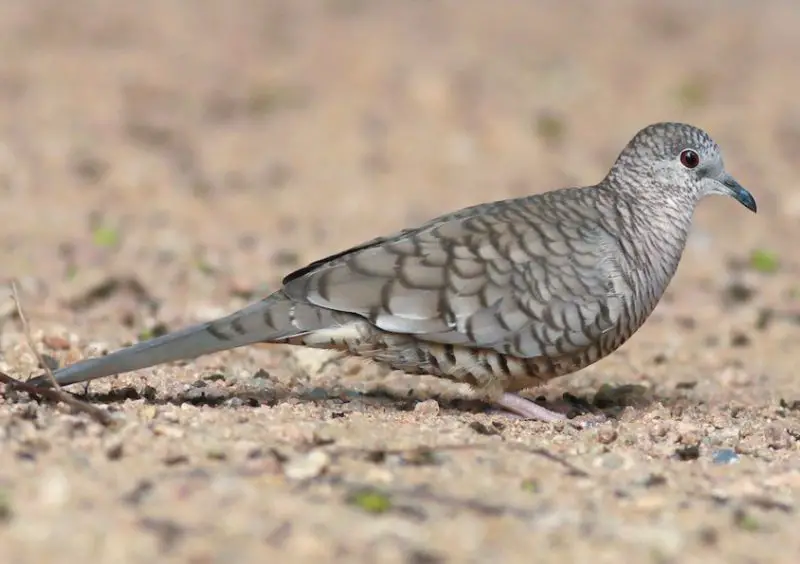
The Inca Dove is a small, slender species known for its unique scaly-patterned feathers, which give it a textured appearance. Its light gray to buff coloration is accented by darker edges on each feather. This intricate mottling sets it apart from all other dove species found in Kansas.
Adults typically measure about 8 to 9 inches in length, making them one of the smallest doves in the region. Their wings, though short, support a rapid, fluttering flight. Their tails are long and squared, creating a distinctive shape when they fan them during displays.
In Kansas, Inca Doves are rare but occasionally recorded in southern regions, especially near towns, parks, or warm microhabitats. They prefer open, dry areas with scattered trees or brush. Their presence often depends on mild winters and available food sources.
Their diet consists mainly of seeds and small grains, which they forage from the ground. They are gentle, quiet birds that often form loose, small groups and roost close together for warmth. Their behavior is peaceful and unobtrusive, making them easy to overlook unless observed closely.
Best Time and Places to Observe Doves in Kansas
Best Time of Year to See Doves in Kansas
Doves can be seen throughout the year in Kansas, but late spring through early fall offers the best viewing conditions. During these months, temperatures are warm, food is abundant, and most species are actively nesting or raising young. Mourning Doves and Eurasian Collared-Doves are especially visible in summer when they gather in pairs or small flocks in open habitats. Migration periods, particularly late August and September, also bring increased movement and activity, making it easier to spot multiple species in a single outing.
Best Places to Observe Doves in Kansas
Kansas offers a wide range of ideal habitats for dove watching, including urban areas, agricultural fields, grasslands, and wooded edges. Small towns, parks, farms, and suburban neighborhoods often host large numbers of Mourning Doves and Eurasian Collared-Doves. For White-winged Doves or rarer species like the Inca Dove, southern and central Kansas provide the best opportunities, especially near water sources, grain elevators, or areas with scattered trees. Early morning and late afternoon are the most active times, when doves feed, preen, and move between roosting sites.
FAQs About Doves in Kansas
Are doves common in Kansas?
Yes. Mourning Doves and Eurasian Collared-Doves are very common throughout Kansas and can be seen year-round, while species like White-winged Doves and Inca Doves are less common but still regularly observed.
What is the most common dove species in Kansas?
The Mourning Dove is the most widespread dove in Kansas, found in nearly every county and in all types of habitats—from rural prairies to busy urban neighborhoods.
Are Eurasian Collared-Doves invasive in Kansas?
Yes. This species is non-native and has rapidly expanded across the state. While not as ecologically damaging as some invasive birds, its population growth has noticeably increased in urban and rural areas.
Do doves migrate in Kansas?
Mourning Doves migrate, with many leaving the state during late fall. However, warm winters allow some to remain year-round. Eurasian Collared-Doves and Rock Pigeons generally stay in Kansas throughout the year.
What do doves eat in Kansas?
Most doves feed primarily on seeds, grains, and small fruits. Agricultural crops, native grasses, and backyard feeders provide abundant food sources, especially during summer and early fall.
Where do doves nest in Kansas?
Doves typically nest in trees, shrubs, and sometimes on man-made structures. Mourning Doves build simple, loose stick nests, while Rock Pigeons often choose ledges, barns, and bridges.
Are doves protected in Kansas?
Yes. Mourning Doves are a regulated migratory game species with specific hunting seasons. Other species, such as Eurasian Collared-Doves, may have different regulations depending on location and time of year.
Can I attract doves to my backyard?
Absolutely. Doves are easily attracted with platform feeders containing millet, cracked corn, and sunflower seeds. Providing water sources and low, open perches also encourages them to visit regularly.
Are doves dangerous or aggressive?
No. Doves are gentle birds and rarely show aggression. Eurasian Collared-Doves may chase smaller birds at feeders, but dove species do not pose any danger to people.
Why are White-winged Doves appearing more often in Kansas?
White-winged Doves have expanded their range northward over the past decades. Warmer temperatures, urban landscaping, and available food sources have allowed them to settle more frequently in Kansas.

